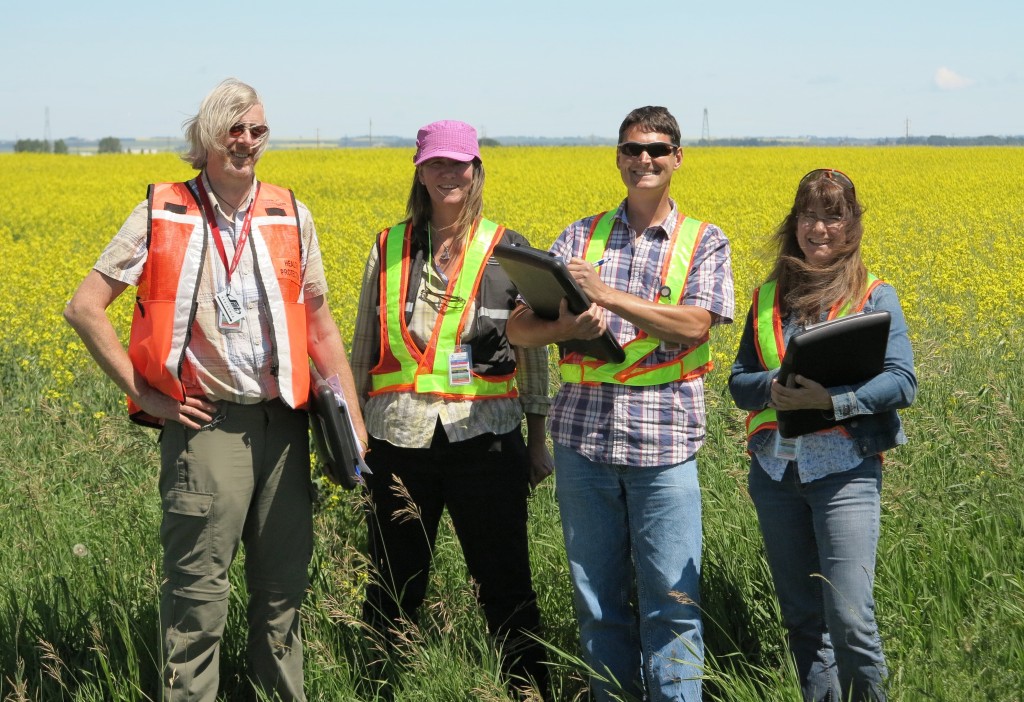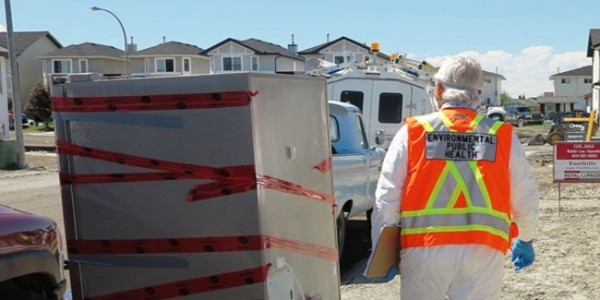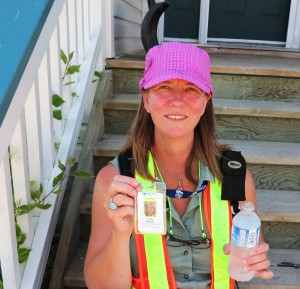Love thy neighbour

Helping out Alberta. From left to right: Phil Muirhead, EHO (VCH), Cindy Watson, senior EHO (VCH), Rob Birtles, EHO (Interior Health) and Judy Ekkert, EHO (Interior Health)
When the rivers in southern Alberta swelled to record levels in June, flooding much of the province, VCH and Interior Health were quick to provide help for the neighbouring residents.
In late June, B.C. sent four (two from VCH and two from Interior Health) volunteers to High River, a town of about 13,000 people that was completely flooded. Since then, the team’s been designated as public health inspectors for Alberta Health Services providing much-needed residential clean up, disinfection of drinking water, mould prevention as well as advising the locals on how to protect themselves from materials contaminated by dirty flood water and sewage.
One of those volunteers is Cindy Watson, an environmental health officer at VCH who will be in Alberta for four weeks.
“I really believe we’re providing a useful and important health protection service,” she says, “and the people we talk to seem grateful for it despite their being overwhelmed. The team of volunteers and the Alberta Health Services environmental health officers have been great to work with.”
Paul Markey, manager of Environmental Health at VCH says the situation in High River was dire.
“The situation for residents was quite dangerous,” he says. “You get a lot of conditions from mould growth and food-storage areas can become contaminated and dangerous. Also drinking-water systems can become contaminated by sewage. When wells get flooded, the sewage leaks in and the drinking water becomes contaminated.
When asked if she has done any work like this before, Cindy says she has, but not on this kind of scale.
“The entire town of High River was evacuated as most of the homes and streets and commercial areas were either flooded or had sewage back up – the community sewage system failed,” she describes. “Most places we have seen had both sewage and floodwater in the basements and garages for days. Most basements were filled four to seven feet with it, some main floors were flooded, and some houses were under water.”
Cindy says that in addition to the physical toils of walking through slippery mud and around large piles of debris and garbage, the job has its emotional challenges as well.
“We speak to people who are in distress,” she says. They’re tired, angry, sad, and overwhelmed; sometimes that is all they want to talk about, so we listen. Mental health services provided us with some support materials and contact info to distribute. It is hard to fathom what people are going through.”
“Most people we speak with thank us for our time – some share stories with us and some have kept a pretty good sense of humour. It was good to see people had not lost hope.”


